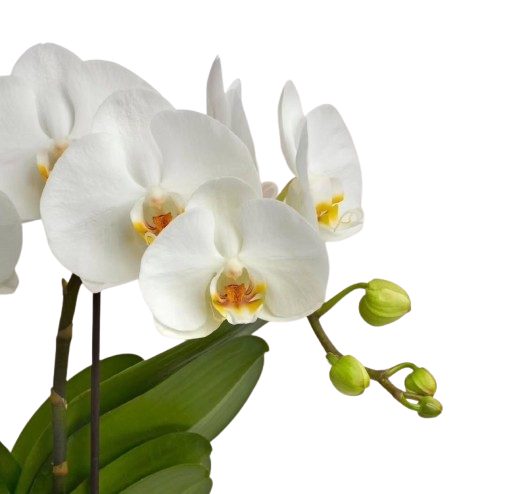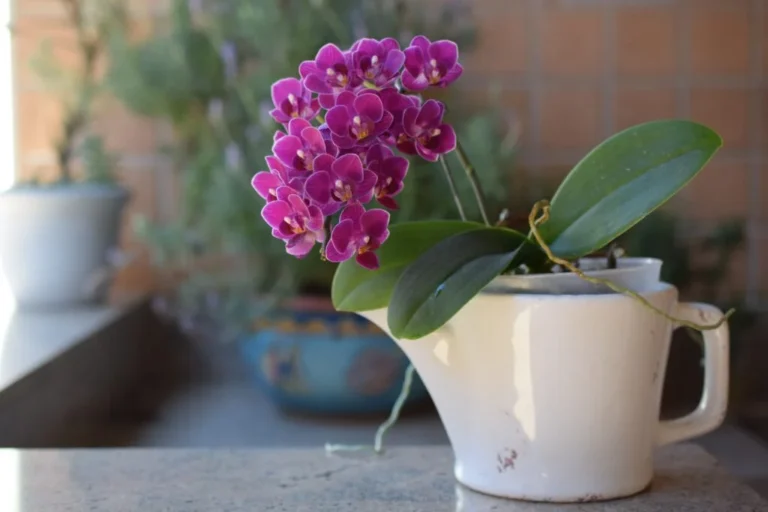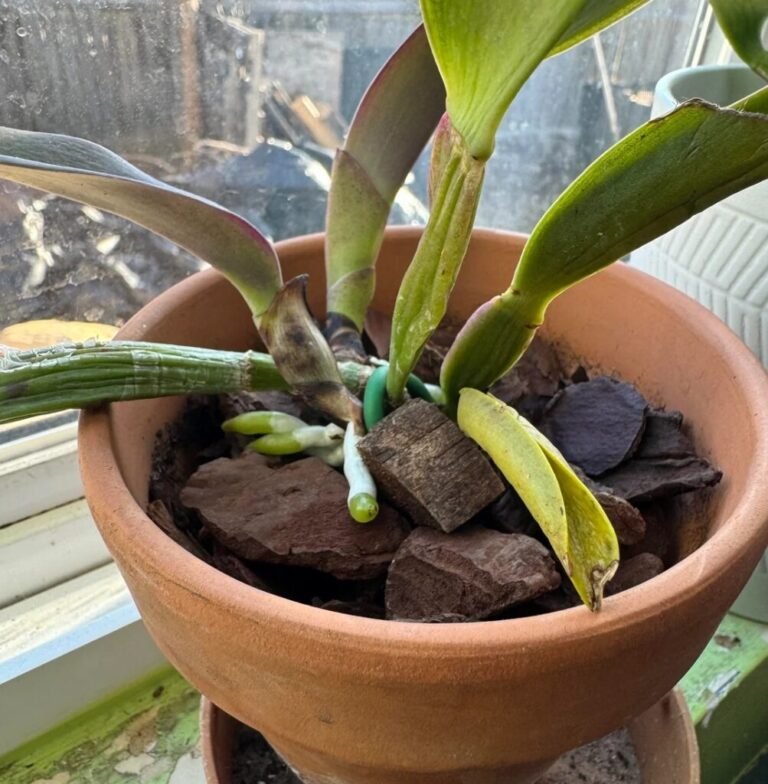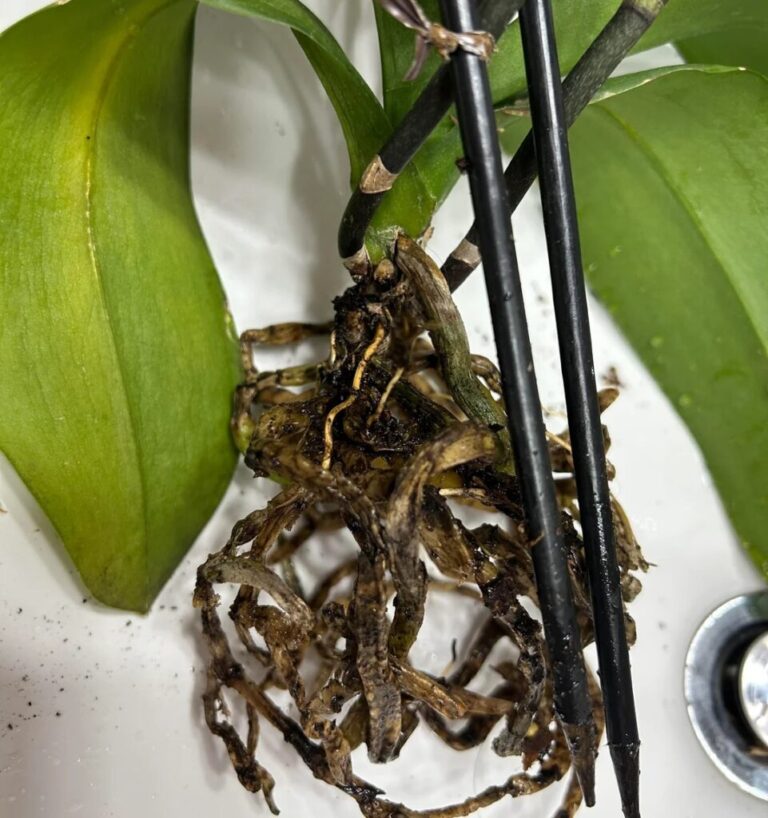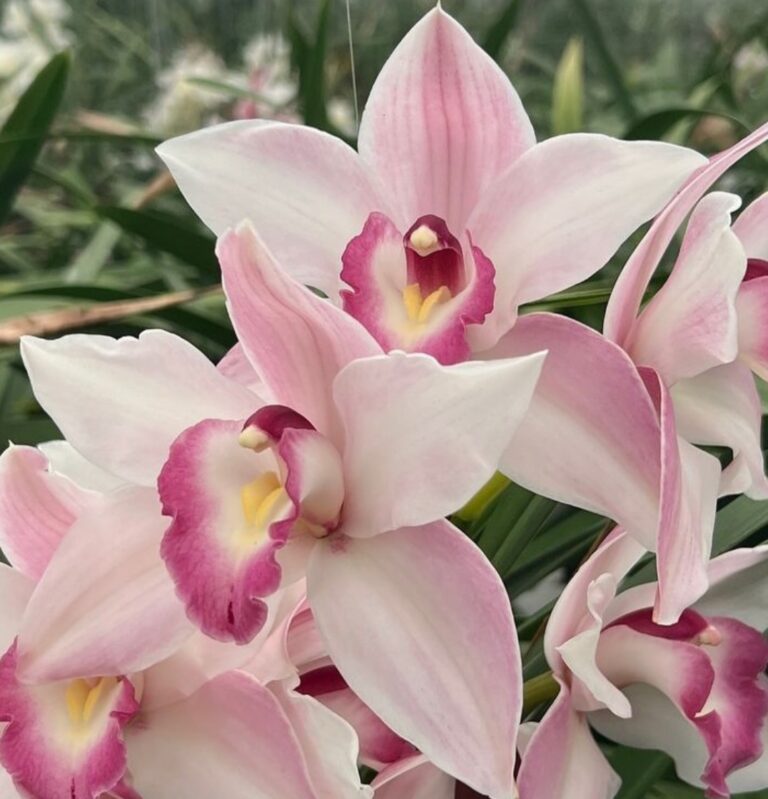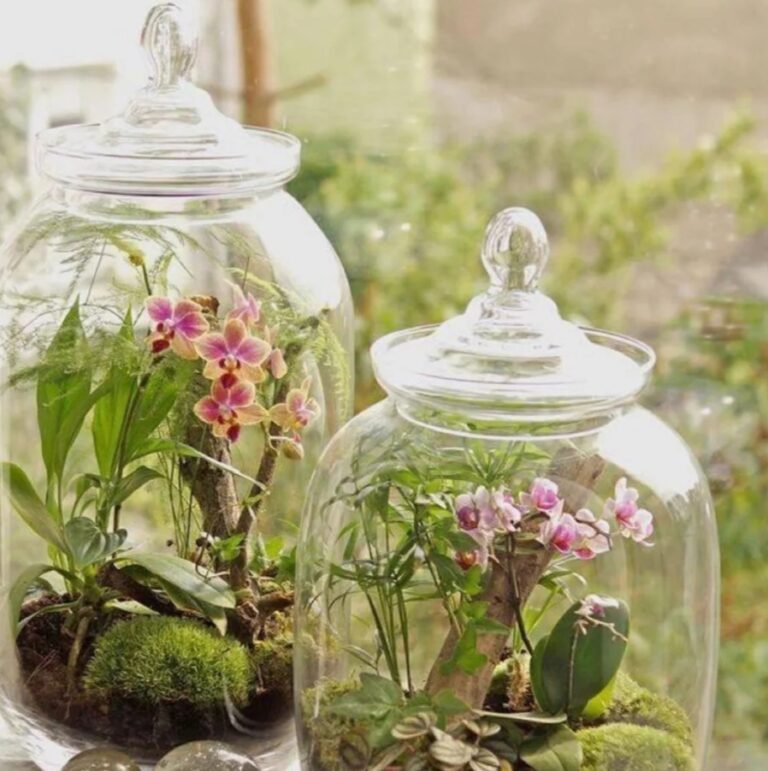White orchids, particularly the elegant Phalaenopsis, are a symbol of beauty, grace, and purity. However, even seasoned growers encounter challenges when caring for these stunning blooms. From drooping leaves to pest infestations, maintaining healthy plants and vibrant flowers can sometimes feel overwhelming. Understanding these common issues and their solutions is essential to help your orchids thrive. This guide explores the most frequent problems faced by orchid enthusiasts and provides practical solutions to keep your plants in their best condition.
Orchid White Flowers 101 Problems and Effective Solutions
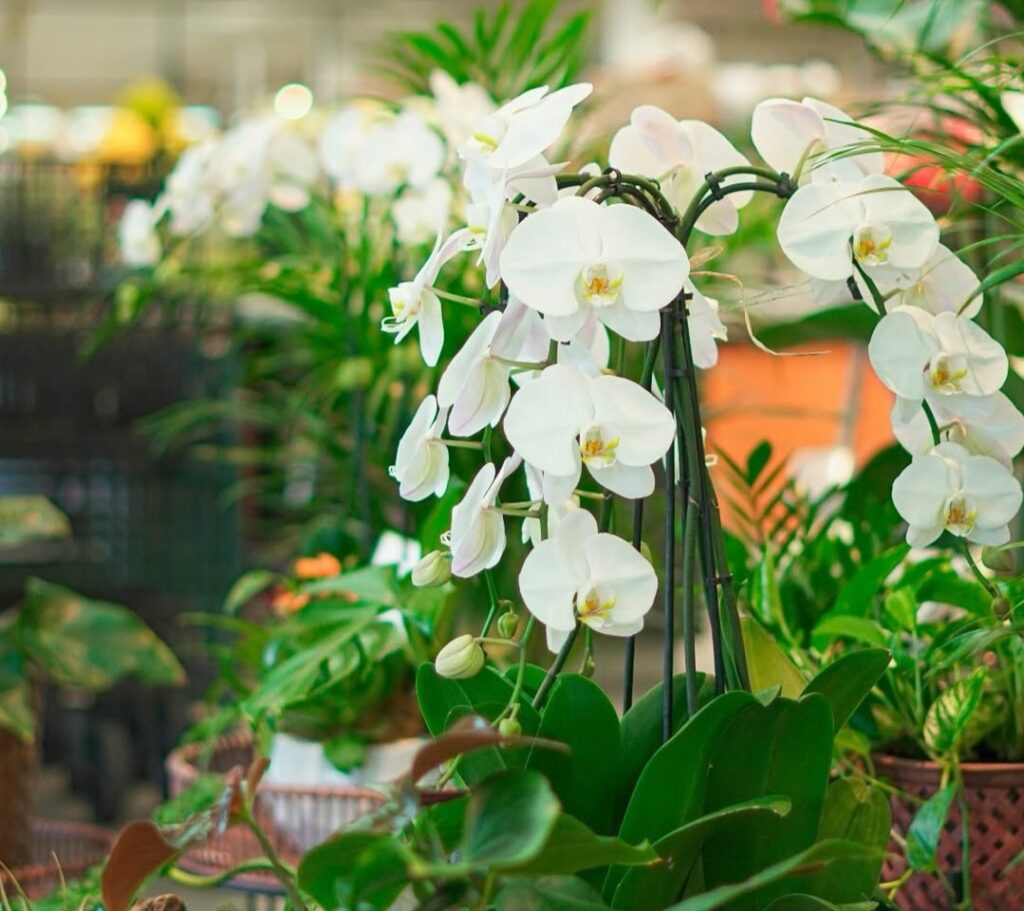
1. Yellowing Leaves
Problem: Yellowing leaves are a common issue that may indicate overwatering, insufficient light, or even a natural ageing process. This condition can be alarming for new growers, especially when they’re unsure of the cause.
Solution:
If overwatering is the culprit, allow the potting medium to dry out completely before watering again. In order to avoid water collecting, make sure the pot has adequate drainage. For insufficient light, place your orchid in bright but indirect sunlight. Avoid direct sun exposure, which can scorch the leaves. If the yellowing occurs on older leaves near the base of the plant, it’s likely a natural part of the orchid’s life cycle. In such cases, simply let the leaf fall off naturally or trim it once it is completely dry.
2. Root Rot
Problem: Root rot is one of the most common and damaging problems faced by orchid owners. It usually happens when the roots are left in waterlogged soil, causing them to become mushy, black, and unable to absorb nutrients.
Solution:
To address root rot, carefully remove the orchid from its pot and trim away the affected roots with sterilised scissors. Repot the plant in fresh, well-draining orchid bark or sphagnum moss. It’s essential to water sparingly until the plant develops new, healthy roots. Make sure your pot has sufficient drainage holes to prevent water from accumulating at the bottom.
3. Bud Blast
Problem: Bud blast occurs when unopened orchid buds suddenly fall off before blooming. This can be caused by environmental stress, such as abrupt temperature changes, low humidity, or exposure to drafts.
Solution:
To prevent bud blast, maintain a stable environment for your orchid. Ideal temperatures range between 65–75°F (18–24°C). Keep the plant away from heating vents, air conditioners, or draughty windows. To boost humidity levels, use a humidifier, mist the plant lightly, or place a pebble tray filled with water beneath the pot. Consistency is key in preventing this issue.
4. Pests
Problem: Orchids are susceptible to pests such as mealybugs, scale, and spider mites, which can weaken the plant and affect its ability to bloom. These pests often hide in the crevices of leaves and flowers, making them difficult to detect early on.
Solution:
For mealybugs, gently dab the pests with a cotton swab dipped in rubbing alcohol to kill them. Scale can be removed by scraping them off with a soft brush and applying insecticidal soap. Spider mites thrive in dry environments, so increasing humidity and spraying the leaves with water can help. For severe infestations, use neem oil or horticultural oil as a natural pesticide. Regularly inspect your plant to catch pest issues early.
5. Lack of Blooms
Problem: Orchids that don’t rebloom can be frustrating, especially when all other care aspects seem on point. The lack of blooms is often due to inadequate light, improper temperature, or nutrient deficiencies.
Solution:
Ensure your orchid gets enough bright, indirect light, as insufficient lighting is a common reason for no blooms. Orchids also respond well to a slight drop in nighttime temperatures (around 55–65°F or 12–18°C) to stimulate flower spikes. Use a balanced orchid fertiliser, such as a 20-20-20 formula, once a month during the growing season. Reduce feeding during the winter months.
6. Wilting Flowers
Problem: Prematurely wilting flowers can be caused by underwatering, low humidity, or environmental stress, making it challenging to enjoy the full beauty of your orchid.
Solution:
Water your orchid thoroughly but avoid overwatering. The potting medium should be damp but never soggy. Increase humidity around the plant by misting or using a humidifier, especially during dry seasons. Keep the orchid in a stable environment, away from heat sources or cold drafts that could stress the flowers.
7. Fungal and Bacterial Infections
Problem: Black spots or mushy areas on orchid leaves are telltale signs of fungal or bacterial infections. If untreated, these infections can spread and severely damage the plant.
Solution:
To manage infections, trim off the affected areas using sterilised scissors to prevent further spread. Apply a fungicide or bactericide as needed. Improving air circulation around the plant is crucial to reduce excess humidity, which encourages the growth of fungi and bacteria. Always water your orchid early in the day to allow the leaves to dry completely by evening.
Preventive Care Tips
Regularly inspect your orchids for any signs of stress, pests, or disease.
Water only when the potting medium feels dry to the touch to avoid overwatering.
Refresh the potting medium every 1–2 years to maintain optimal root health.
Provide adequate light and maintain consistent temperatures suitable for orchids.
White orchids are a breathtaking addition to any home, but their delicate nature requires careful attention. By understanding and addressing common problems like yellowing leaves, root rot, or pest infestations, you can ensure your orchids remain healthy and produce vibrant blooms. Preventive care, combined with prompt action when issues arise, will help your orchids flourish and add a touch of timeless elegance to your space.
Remember, every challenge is an opportunity to learn and grow as an orchid caretaker. With patience and dedication, you can master the art of keeping your white orchids thriving for years to come.
FAQs
Why are my orchid’s white flowers turning yellow or brown?
This could be caused by overwatering, underwatering, exposure to direct sunlight, or natural aging of the blooms. Check the plant’s watering schedule, ensure it’s not in direct sun, and trim aged flowers to encourage new growth.
What causes the white flowers on my orchid to fall off prematurely?
Flower drop is often due to stress, which can result from temperature fluctuations, overwatering, or low humidity. Ensure a stable environment with moderate humidity (50–70%) and avoid sudden changes in conditions
Why are the buds on my white orchid flowers not opening?
Bud blast, where buds fail to open, can occur due to inconsistent watering, low humidity, or drafts. Make sure the orchid is in a stable, warm environment and keep its roots healthy by maintaining a proper watering routine.
How can I revive my orchid if the white flowers appear wilted?
Wilted flowers may be a sign of dehydration, root rot, or poor humidity levels. Inspect the roots for rot, trim any damaged roots, and repot if necessary. Increase humidity and water appropriately, ensuring proper drainage.
Why are my orchid’s leaves turning yellow while the white flowers still bloom?
Yellowing leaves might indicate overwatering, nutrient deficiency, or natural leaf aging. Check the potting medium for moisture levels, fertilize the plant appropriately, and trim yellow leaves if they are old.
How can I prevent pests from damaging the white flowers on my orchid?
Common pests like aphids, mealybugs, and spider mites can damage flowers. Use a gentle insecticidal soap or neem oil to treat infestations, and inspect the plant regularly to catch pests early.
Can I enhance the brightness of my orchid’s white flowers?
Bright, indirect light helps maintain vibrant white flowers. Ensure the orchid is placed near a window with filtered sunlight, and provide balanced orchid fertilizer to support healthy blooms.
What should I do if my orchid produces deformed white flowers?
Deformed flowers may result from environmental stress, nutrient imbalance, or genetic factors. Ensure consistent care with proper light, humidity, and fertilizer to prevent future issues.
How do I care for my orchid after the white flowers fall off?
After the blooms drop, trim the flower spike just above a node to encourage reblooming. Continue to provide bright, indirect light, proper watering, and periodic fertilization.
What is the best way to keep my orchid’s white flowers healthy during blooming?
Maintain a stable environment with adequate humidity, consistent watering, and bright, indirect light. Avoid moving the orchid frequently or exposing it to drafts and extreme temperatures.
